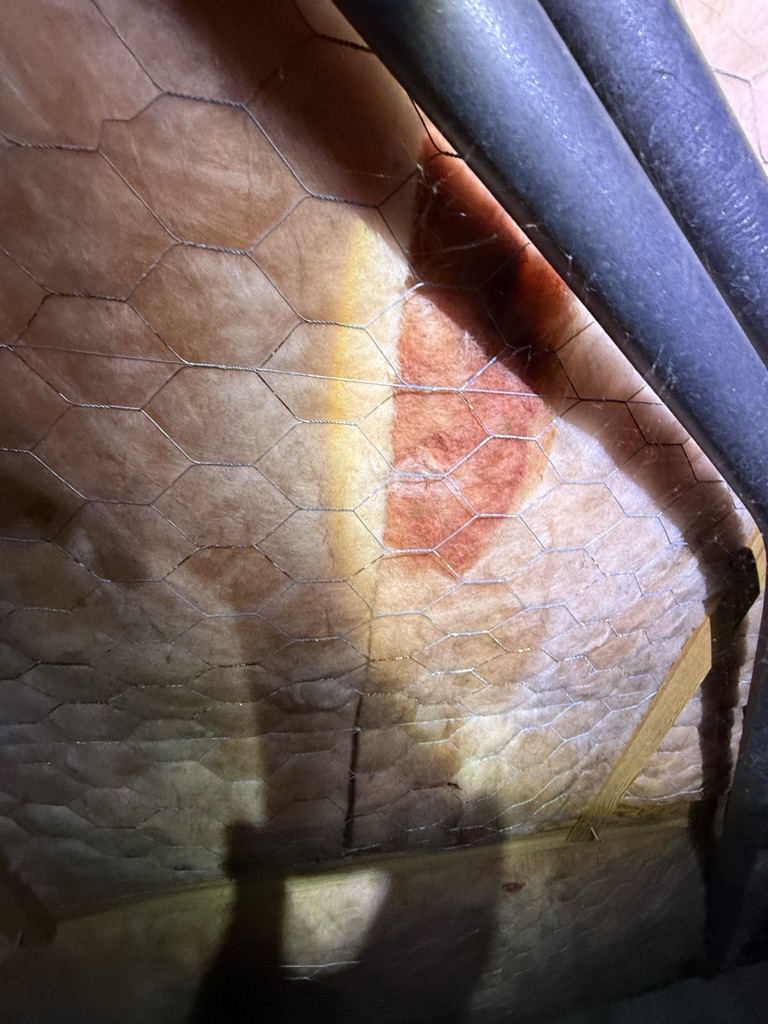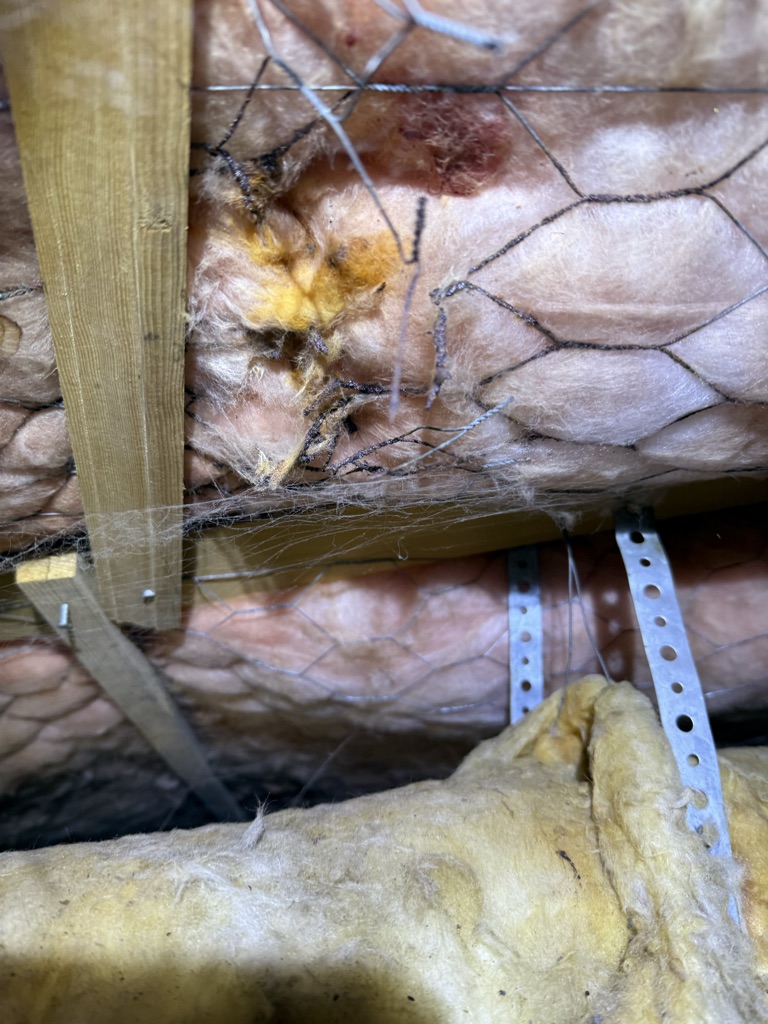The Problem
A severe rodent infestation was initially reported in a Springfield customer’s attic and our energy consultant Monte Riddle was called out to take a look at the situation. Nancy, the customer, had previously informed Monte that she had checked the crawl space and everything looked fine.
However, based on Monte’s prior experience, he knew that rodents tend to live in the attic during the winter for warmth, and migrate down to the crawl space during the summer when the attic becomes too hot.
What We Discovered:
Upon initial inspection, the crawl space looked great, but there was chicken wire holding up the fiberglass insulation so it couldn’t fall down.
Unfortunately, the crawl space had a massive mouse infestation that could not be initially seen on the outside.
- The mice lived comfortably in the fiberglass insulation
- There were virtually no signs of the mice there due to the insulation being held up by the chicken wire
- The rodents’ urine went through the insulation and onto the chicken wire, where their nests were
- The urine ate through the chicken wire since it is acidic
- Dead mice and pests were everywhere
Solution
Encapsulation was Monte’s solution to the customer’s issues.
What is encapsulation?
- Encapsulation is a process that involves sealing the crawl space from the outside and making sure it’s airtight
How was the home encapsulated?
- Cellulose insulation was installed in the garage attic and laundry room
- Cellulose has boric acid, which rodents and bugs are less attracted to
- Cellulose can prevent mold, considering moisture is correspondingly reduced
- Spray foam was applied in the roof deck of the attic, and from the floor down to the foundation, sealing the crawl space from the outside so no air can come in
- Thick layers of vapor barrier were applied to establish an airtight environment
Why encapsulation?
- Deters rodents from infesting the crawl space by making it less accessible and easy to reside
- Keeps the area at a certain humidity, preventing mold, dry rot, and moisture
- Seals crawl spaces from the outside so no air comes in, ensuring it’s kept airtight
- Makes the home a healthier environment, reduces health issues, and improves air quality and circulation
- Increases energy efficiency of home since gaps and barriers are sealed
- Can last 25 years
The customer was “exceptionally happy” with the project’s outcome, detailing how the processes and approaches taken by our team would make it more difficult for rodents to want to live in the house.
If your home is infested with rodents or if you want further information about encapsulation, contact Josh Lowe’s Dr Energy Saver today at to learn more!
BEFORE: The rodents’ urine leaked through the existing fiberglass insulation, which went onto and through the chicken wire that was holding it up.


This is an example of part of the encapsulation process that we will be doing for the project:

